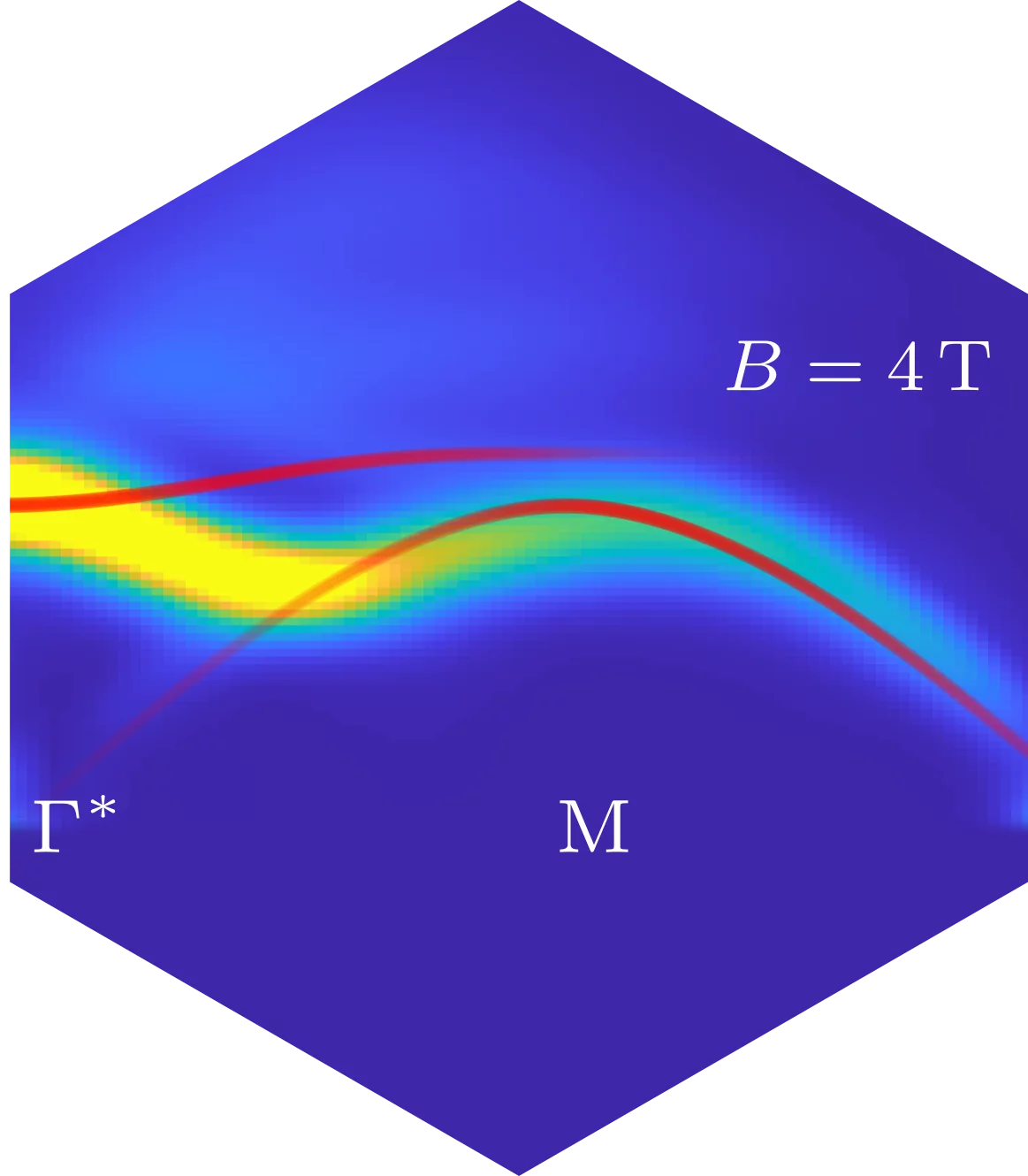The search for new quantum many-body phenomena in magnetic materials has a strong focus on highly frustrated systems and the resulting quantum spin-liquid state. However, even unfrustrated magnetic materials show a multitude of unconventional features in their spin excitation spectra. By using the synergy of complex single-crystal growth techniques, high-resolution neutron spectroscopy in an applied magnetic field and state-of-the-art numerical methods, PSI researchers from LNS and LTC, in collaboration with ILL scientific staff, have revealed several novel phenomena in the dynamical spin correlations of YbBr3, a van der Waals halide material.
In a recent article published in Physical Review Letters, the researchers showed that YbBr3 provides an excellent realization of the 𝑆 = 1/2 antiferromagnetic Heisenberg model on the honeycomb lattice. They performed detailed inelastic scattering experiments with both unpolarized and polarized neutrons at all applied magnetic fields up to the fully field-polarized state, where traditional spin-wave theory describes the spectrum perfectly. At all intermediate fields down to zero Tesla, however, the measured spectral function lay far from the magnon branches of standard spin-wave theory, and only calculations by the method of cylinder matrix-product states (MPS) allowed a fully quantitative description of the experimental data.
Crucially, both constructive and destructive collective features caused by strong quantum fluctuations were observed in the spectra. With increasing magnetic field, the magnon excitations became progressively broader to the threshold of complete decay at high fields. At low fields, the magnon at the K point is almost fully suppressed and the spectrum is dominated by an excitation continuum analogous to the (π,0) anomaly in the square-lattice Heisenberg antiferromagnet (another paradigm unfrustrated model). A remarkable constructive phenomenon is the development of an additional magnetic excitation formed by the convolution of a finite-momentum magnon and a field-dependent zero-momentum uniform precession mode. Given its intrinsically continuum nature and omnipresence in momentum space, this excitation was termed the “magnon shadow.” Lastly, the longitudinal spin excitations calculated by MPS revealed the spectacular emergence of a roton-like dispersion of the magnonic modes at 4 Tesla that was confirmed unambiguously in experiments using polarized inelastic neutron scattering. This roton-like mode constitutes a magnetic analogue to the roton excitations in superfluid Helium, as they share the property that both find their origin in strong many-body interactions that cause a dramatic mutual renormalization of the conventional excitation modes and the higher-energy excitation continuum.
The authors concluded that a wealth of interacting many-body phenomena remain to be understood in the complete field-induced spectral functions of quantum magnetic systems, even in the absence of magnetic frustration.
Facility: SINQ
Reference: J.A. Hernández et al, Physical Review Letters 135, 146701 (2025) - Editors' Suggestion
Read full article: here



